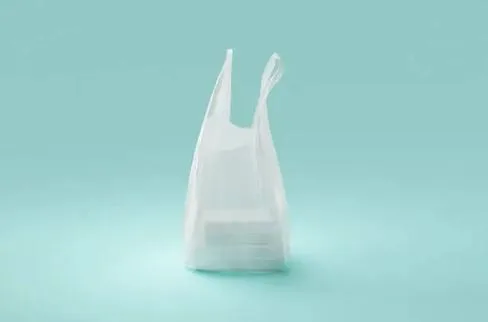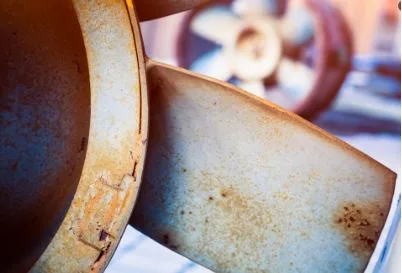What You Need To Know About Plastic Bag Making Machines: Technology, Applications, and Buying Tips
Plastic bags still remain one of the most common packaging products used today. Even with the rise in interest over biodegradable alternatives, bags made of plastic continue to be used in the retailing, food packaging, medical supplying, logistics, and other industries because of their low cost and great durability. What most don’t know is that the plastic bag making machine is fundamental in the creation of such items accurately and efficiently.
This article covers all the essential details related to the technology and types of plastic bag making machines, their core technologies, major applications, and factors to consider when buying one for your production line. It also links some of the best machines available in the market.
What Exactly is a Plastic Bag Making Machine?
A plastic bag making machine is an example of an industrial machine specifically tailored for making bags from plastic films. Every plastic bag making machine includes a number of subdivisions and automates processes like feeding, sealing, cutting, printing, folding, stacking, and more. Depending on the model and configuration, these machines can produce different bag types like zip-lock bags, flat bags, shopping bags, courier bags, and even garbage bags.
Usually, manufacturers prepare film rolls of polyethylene (PE), polypropylene (PP), or even biodegradable plastic. The machines further process these films under heat and pressure to create bags that meet industry standards.
Types of Plastic Bag Making Machines
Based on changing production requirements, several types of plastic bag making machines have been developed. Select the most appropriate machine depending on the intended type and style of plastic bag you wish to produce. The following are the most common types of plastic bag making machines:
T-Shirt Bag Making Machines
These machines serve the needs of making “T-shirt” style shopping bags seen in grocery stores. With the automatic punching and stacking units that come fitted with these machines, they lend themselves to large volume, continuous production.
Bottom Sealing Bag Machines
These are flat and gusseted bag producing machines. They are employed for food packaging and general utility purposes. Bottom sealing design enables strength and durability on the bags.
Side Sealing Bag Machines
These machines seal the plastic from the sides. They are commonly used to create mailing bags and document pouches for special purposes. Side sealing provides uniformity while still allowing for ample customization.
Zipper and Drawstring Bag Machines
This type of machine has systems that insert zippers and drawstrings as the bag is being formed. These are great for reusable packaging such as those frequently used in the apparel and personal care industries.
Garbage Bag and Coreless Roll Bag Machines
These strap types of machines produce roll type trash bags with easy tear-off perforations. Some machines have coreless rolling units that further conserve materials and minimize waste.
If you want to see more examples and specifics of machine models, there is a great selection of plastic bag making machines offered here:https://www.ketegroup.com/pt/product-category/plastic-bag-making-machines/ .
How Do These Machines Work?
The operation of the machines that make plastic bags involves a number of steps that are fully automated through heating, pressing, and moving mechanically. Some basic steps are:
- Feeding – The process begins with loading the film rolls into the machine. These rolls are unwound using tension controllers.
- Sealing – The film is sealed using ultrasonic or heat energy. The seal can be at the bottom or on the side.
- Cutting – Film cutting is done to set lengths using blades or hot wire cutters.
- Flexographic or rotogravure printing – Some machines print logos or text with flexographic or rotogravure printers.
- Punching – T-shirt styles or other custom shapes have handles punched out.
- Stacking – Bags are automatically stacked or rolled after completion.
Modern machines are equipped with microcomputer controlled systems, servo motors, and photoelectric sensors which guarantee accurate processes, optimal material usage, and maximum production rates.
Different Industry Uses
Across various industries, bag making machines have distinct needs in relation to size, shape, strength, and customization. Below are some examples of how various sectors make use of these machines:
Retail
Plastic shopping bags are a staple when it comes to retail, whether it is for groceries, clothing, or general merchandise. Retailers depend on machines that provide very high outputs of T-shirt and flat handle bags, which all come branded to specification.
Food Packaging
Hygiene and barrier protection is needed in the food sector. Bags for frozen foods, snacks, and even produce are often manufactured using multi layer film. Machines must be compliant with food grade standards and allow the use of different types of film.
Medical and Sanitary
Medical bags require cleanroom production processes. Machinery for these products must feature precision sealing and leak proofing, as well as sterilization compatibility in some instances.
Couriers and Logistics Services
For protective bubble courier bags, there is a need for security seals, writing surfaces, and in some cases, bubble linings. This type of packaging can also incorporate address pouches and adhesive tape through side sealing machines.
Eco-Friendly Practices
Sanitary trash bags manufactured by roll type equipment are applicable in civic, domestic, and industrial refuse disposal. The facility’s ease of usage systems do not impair tear strength of the equipment.
Choosing the Best Plastic Bag Making Equipment: A How-To Guide
To maximize your investments and best fit your expectations, take into consideration the following points before purchasing a plastic bag maker machine:
- Type of Bags: Determine what your needs and wants are for T-shirt sacks, flat sacks, or specialty sacks. Each requires different types of machines.
- Material Compatibility: Confirm if the machine supports the materials you intend to work with, whether they are LDPE, HDPE, PP, or biodegradable materials.
- Production Rate: Check the efficiency and speed ratings of the machine to ensure it aligns with the requirements of your operations.
- Automation Features: Consider the impact of touch screen panels, auto tension control, and error alarms in sharpened usability and reduced downtime.
- Customization Needs: Make certain that the machine accords with your needs for printing, punching, or laminating the bags with additional materials.
- Maintenance and Support: Minimum downtime and sustained production depend greatly on customer service and parts availability.
KTETGROUP, as one of the industry’s leaders, serves manufacturers wanting to set up or upgrade an existing production line with a comprehensive selection of economically priced and advanced plastic bag making machines. Their knowledge in the flexible packaging market positions them as a supportive partner for companies internationally.
Final Comments
Plastic bag making machines have become invaluable assets in the contemporary packaging sector. The versatility in bag types produced within short durations along with added features has transformed the perspective of businesses towards packaging. From retail to healthcare, these machines drive economies of scale, enhance product marketing, and streamline operational workflows.
When it comes to selecting a machine, think through production targets, materials, and type of bags intended to be produced. Accompanied with the ongoing progress in modern technology, and the need to be more eco-friendly, plastic bag making machines are being designed to sustain more environment friendly and effective production methods.
With or without prior industry experience, working with a dependable company such as KTETGROUP ensures competitive advantage within the plastic packaging industry.






